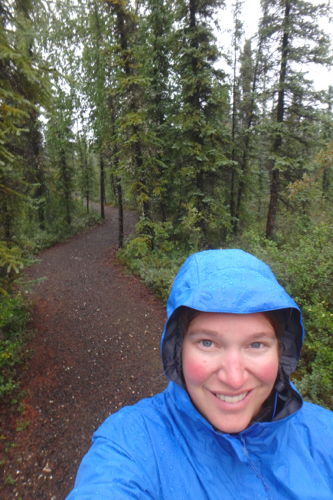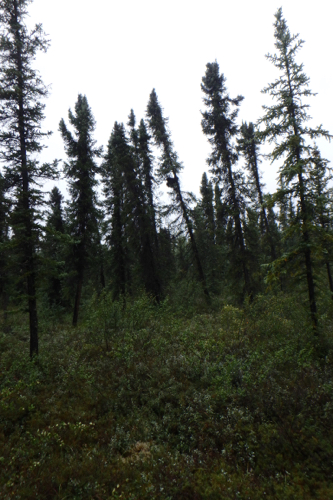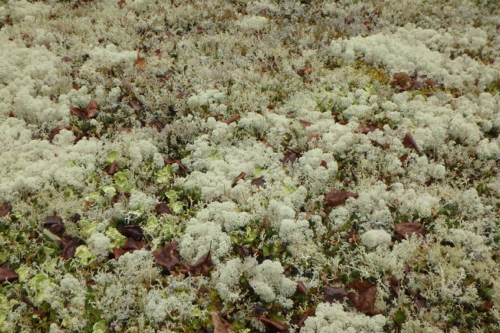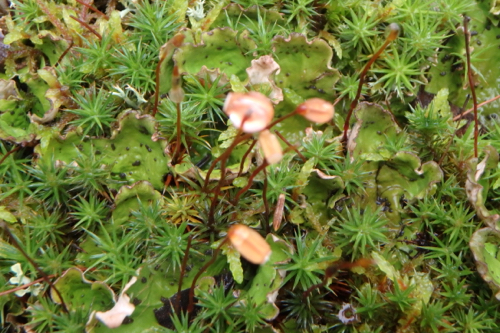 Rebecca Harris takes a hike in the boreal forest, Coldfoot, Alaska.
Rebecca Harris takes a hike in the boreal forest, Coldfoot, Alaska.
When I first arrived in the Arctic, much to my surprise, I noticed many similarities between the forests here and in the mountains of Utah. Both have trees like spruce and aspen, and understory plants like yarrow and rose. But the understory here is dense, and the trees, while tall in some places, seem scrawny compared to what I was used to.
This forest is a boreal forest. Its growth occurs where permafrost, or permanently frozen ground, is patchy, and where the climate is cold and wet. Further north, like Lake Peters, the permafrost is continuous, so soils are too cold and shallow to support trees. The transition between the boreal forest and tundra is an ecotone, or boundary between two ecosystems, called arctic treeline.
In the boreal forest long dark winters give way to short and productive summers. Three months of continuous sun means a lot of photosynthesis is possible, and plants grow rapidly. Overall growth for trees is very slow, however, and trees only 2" in diameter may be as old as 150 years! Trees and other vegetation are affected by permafrost depth and melt. The wobbly trees I noticed when I first arrived, tip over when permafrost thaws and the ground softens.
 Permafrost melt causes trees to tip in the boreal forest.
Permafrost melt causes trees to tip in the boreal forest.
In the boreal forests, animals travel far to find enough food. Still, animals like bear, moose, caribou, porcupines, squirrels, and birds are more abundant than humans. One important source of food is lichens, which grow thick on the forest floor. Lichens are easily digestible and a good source of carbohydrates, and caribou rely on them for energy during the long winter.
 Lichens in the boreal forest serve as an important winter food source.
Lichens in the boreal forest serve as an important winter food source.
 The green lichen in this photo has a symbiotic relationship with the cyanobacteria (black spots) that grow on its leaves and fix Nitrogen from the air.
The green lichen in this photo has a symbiotic relationship with the cyanobacteria (black spots) that grow on its leaves and fix Nitrogen from the air.

Comments
Add new comment